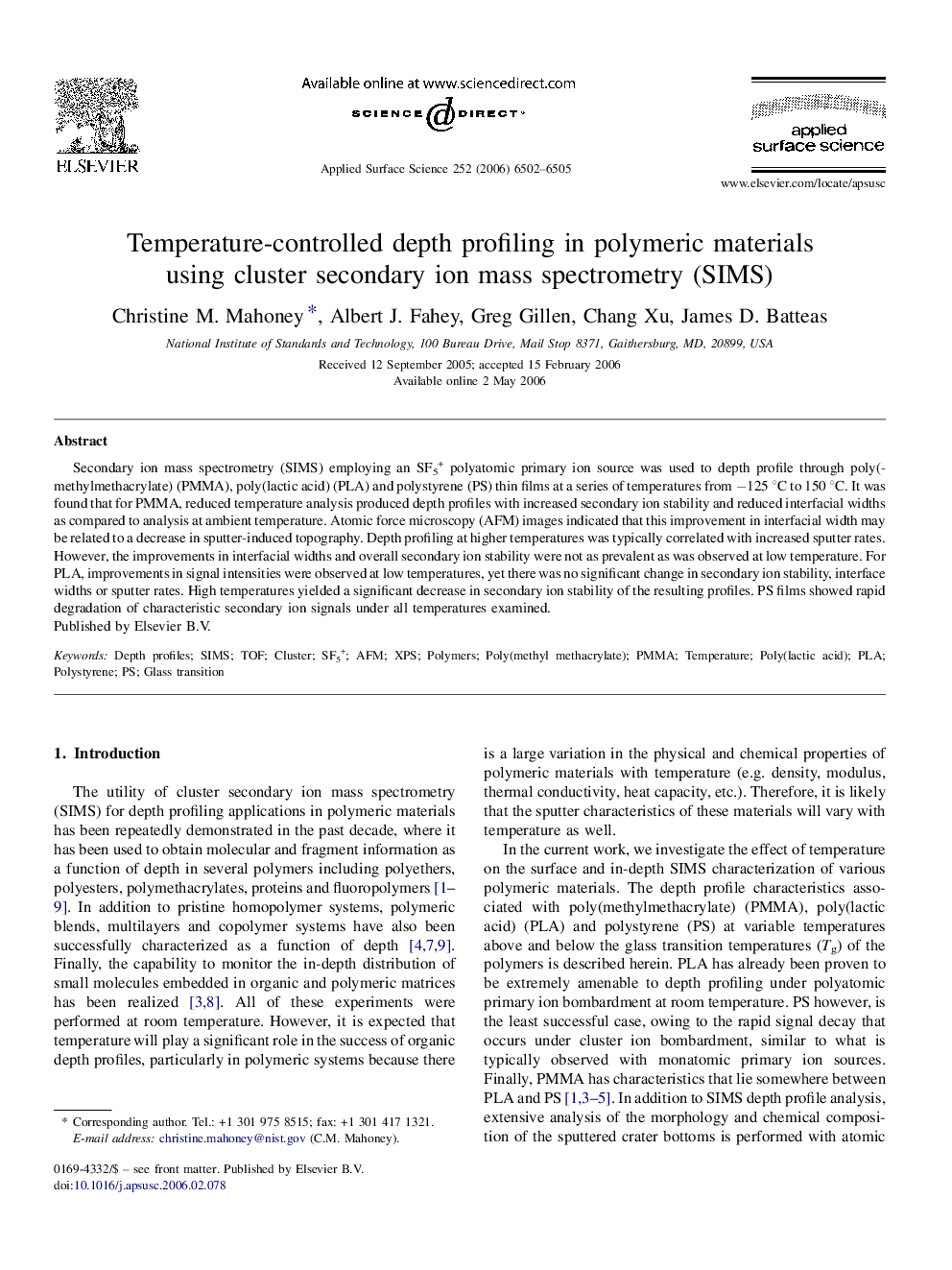| Article ID | Journal | Published Year | Pages | File Type |
|---|---|---|---|---|
| 5368823 | Applied Surface Science | 2006 | 4 Pages |
Secondary ion mass spectrometry (SIMS) employing an SF5+ polyatomic primary ion source was used to depth profile through poly(methylmethacrylate) (PMMA), poly(lactic acid) (PLA) and polystyrene (PS) thin films at a series of temperatures from â125 °C to 150 °C. It was found that for PMMA, reduced temperature analysis produced depth profiles with increased secondary ion stability and reduced interfacial widths as compared to analysis at ambient temperature. Atomic force microscopy (AFM) images indicated that this improvement in interfacial width may be related to a decrease in sputter-induced topography. Depth profiling at higher temperatures was typically correlated with increased sputter rates. However, the improvements in interfacial widths and overall secondary ion stability were not as prevalent as was observed at low temperature. For PLA, improvements in signal intensities were observed at low temperatures, yet there was no significant change in secondary ion stability, interface widths or sputter rates. High temperatures yielded a significant decrease in secondary ion stability of the resulting profiles. PS films showed rapid degradation of characteristic secondary ion signals under all temperatures examined.
